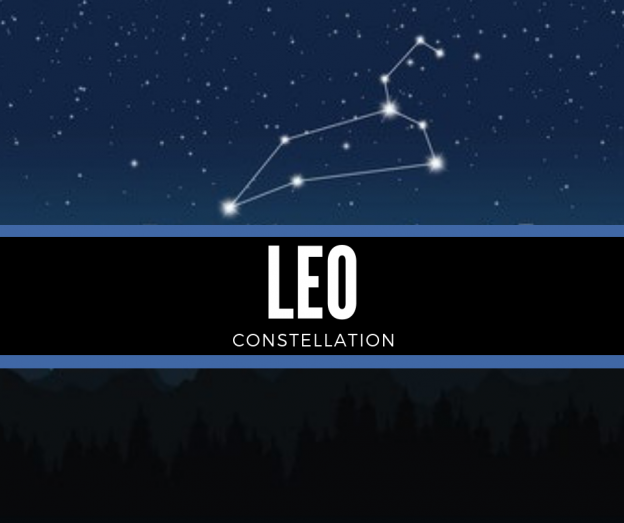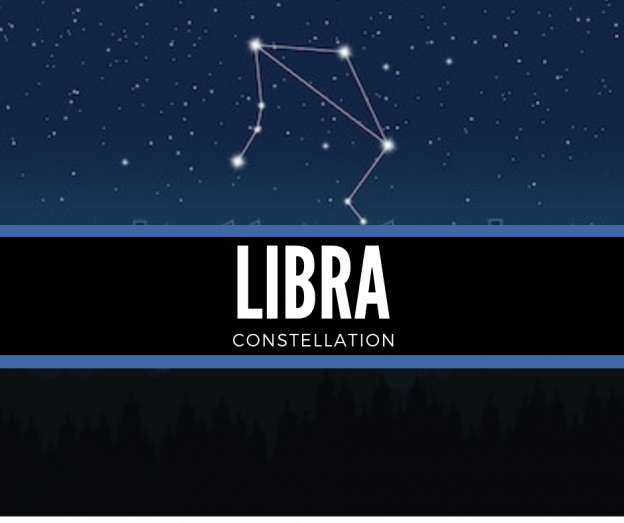Amidst the richness of the night sky, across the multiple constellations that have been recognized as official after centuries of history, a particular segment of the sky stands out above the rest.
Blessed with numerous bright stars and a plethora of deep space objects within its limits, the Leo constellation remains one of the most eventful areas in the celestial sphere and the perennial focus of most eyes glancing up.
Known for its zodiacal relevance and popularity, Leo is a never-ending source of beauty and knowledge for everyone, both in astronomy and astrology. However, it requires a certain amount of information to understand what to look for, how, and when.
ABOUT THE LEO CONSTELLATION.
Located in the northern sky, Leo is one of the most prominent constellations in the celestial sphere. Its name, Latin for “lion” is highly descriptive—unlike some of its peers, it does not take much imagination to see the feline figure in its shape.
Leo ranks as the 12th largest constellation in the sky, occupying approximately 2.30% of its area. This makes it the third largest zodiacal constellation. But the best thing about the Celestial Lion is that it is not only large but also boasts an impressive number of bright stars—the first half of its recipe for popularity.
The other half is its status as a zodiacal constellation—Leo is one of the constellations that mark the ecliptic, also known as the path where the sun, moon, and planets, from Earth’s perspective, apparently cross the sky.
Because of its bright stars and zodiacal nature, Leo is rather easy to find. It’s located between latitudes +90° and -65° and due to its large size, it borders several constellations—fellow zodiacs Cancer and Virgo, Leo Minor, Lynx, Sextans, Crater, Hydra, Coma Berenices, and the ever-famous Ursa Major.
The most famous method to localize Leo relies specifically on Ursa Major—or more accurately, the Big Dipper. The two outer stars in the Big Dipper are known as pointer stars, since one direction points towards Polaris, the North Star, and the other one leads straight to Leo.
However, this method doesn’t work all year—being a zodiacal constellation, Leo’s visibility gets compromised as the sun passes through it, so it is almost impossible to look at it from early August to early October. Peak discernibility takes place in April, but it can be seen at its best from March to June.
MAJOR STARS IN THE LEO CONSTELLATION.
Leo is one of the brightest constellations in the night sky, granted by its big number of gleaming stars, most of them very noticeable with the naked eye—thus, incredibly important.
Regulus.
- With a name that translates from Latin as either “prince” or “small king”, you can only expect greatness. Also known as Alpha Leonis, Regulus is the brightest star in the Leo constellation and the 22nd brightest one in the sky, making it one of the most iconic elements to be seen in the night.
- With its beautiful blue-white glow, Regulus is often described as “the heart of the lion”, thanks to both its position within the constellation and its importance. It is 140 times brighter than the Sun, four times as big, and it’s about 77 light-years away.
- Regulus is also rather unique—it’s considered the only 1st magnitude star to fit perfectly within the ecliptic, meaning it can be seen from any spot on Earth, but it can be sometimes eclipsed by the sun’s glow. It is common to see shots of Regulus alongside the moon or other planets.
Algieba.
- Algieba, known as Gamma Leonis, is actually a double system—meaning it is actually two stars close to one another. Together, their combined shine makes Algieba the second brightest star in the Leo constellation.
- The visually striking star combines the different glow of both stars—red and greenish yellow—making it look like an orange star in the sky. It is esteemed to be around 130 light years away from Earth, and each of its components is calculated to be around double the mass of the sun, but boast different characteristics in size and behavior.
- The name Algieba is Arabic in its roots and means “Lion’s Mane”.
Denebola.
- Known by the alternative name Beta Leonis, Denebola is the actual second brightest star in the Leo constellation—at least on its own. Its shine is bright white, its mass is only 75% larger than the sun, and it lies at 36 light-years from Earth.
- It’s well-known as a spring star that, alongside stars Spica and Arcturus, forms the asterism known as the Spring Triangle, shining brightly during March and May. However, some sources cite Regulus as the representative Leo star of the triangle instead of Denebola.
- Its name has Arabic roots, meaning “tail of the lion”, precisely because that is the part of the constellation it symbolizes.
LEO CONSTELLATION FACTS.
Few constellations are as busy as Leo. The Sky Lion hosts a staggering number of deep space objects and other astronomical events that require further study. As such, the following fact list might not be comprehensive, but it will highlight the best features of this zodiacal symbol.
- No less than fourteen galaxies can be found within Leo’s limits. Three—M65, M66 and NGC 3628—form the spiral galaxy group known as Leo Triplet, as they are close to one another. The best part? They can be perceived rather easily with the assistance of a basic telescope.
- The Leo constellation hosts a meteor shower of its own, aptly named Leonids. The event takes place during November and remains one of the most fascinating spectacles to witness in the night sky.
- Within Leo it is also possible to identify the so-called “Leo Ring”—a primordial cloud composed of hydrogen and helium.
- The sun passes through Leo once a year. During 2019, it will enter the constellation on August 11 and will remain there until September 17.
- As a zodiacal constellation, Leo is considered one of the zodiac signs—said to rule and influence the life and behavior of humans. People born between July 23 and August 22 are said to have their sun sign under the Heavenly Lion.
LEO CONSTELLATION MYTH AND HISTORY.
Leo is, by far, one of the oldest constellations known to humanity—there are archaeological findings that suggest Mesopotamians described it around 4,000 BC. Many other populations also described the Sky Lion, including Persians, Turks, Syrians, Jewish, and Indians.
However, the most prevalent myth associated with Leo remains the Greek one. According to the legend, demigod hero Heracles—also known as Hercules—was instructed to perform twelve labors as a penance for the murder of his family, induced by the revengeful goddess Hera.
One of such duties was the slaying of the dangerous Nemean Lion, so powerful that ordinary weapons couldn’t damage it. The hero used his strength to kill the lion with his bare hands. The gods, then, placed it in the sky as a celebration of the hero’s triumph.
In astrology, Leo is considered the fifth sign of the zodiac—a fire sign ruled by the Sun. Those born under Leo are described as generous, cheerful, warm, passionate and open, but also considered arrogant, self-centered, daring and reckless.
In the night sky, March comes in like a lion—so as soon as spring blossoms into view, it’s suggested to look up and witness the beauty of the roaring king of the firmament.
SEE MORE: Zodiac Constellations
RELATED:
SOURCES:
Algieba: Double Star in Leo by Glenn Chaple at The Skyscrapers.
Leo? Here’s your constellation by Bruce McClure at EarthSky.
Leo Constellation: Facts About the Lion by Kim Ann Zimmermann at Space.com.
Leo Zodiac Profile at Horoscope.com.
Quietly, Regulus ushers in springtime by Larry Sessions at EarthSky.
Want to know your astrology placements? You can generate your astrology chart here with our free birth chart generator tool.
- American Presidents Ranked By Zodiac Sign - January 20, 2025
- ESTP and ESFP in love: 6 Dynamics of Their Relationship - September 4, 2024
- ISFP and ISTP in love: 5 Dynamics of their Relationship. - August 28, 2024





